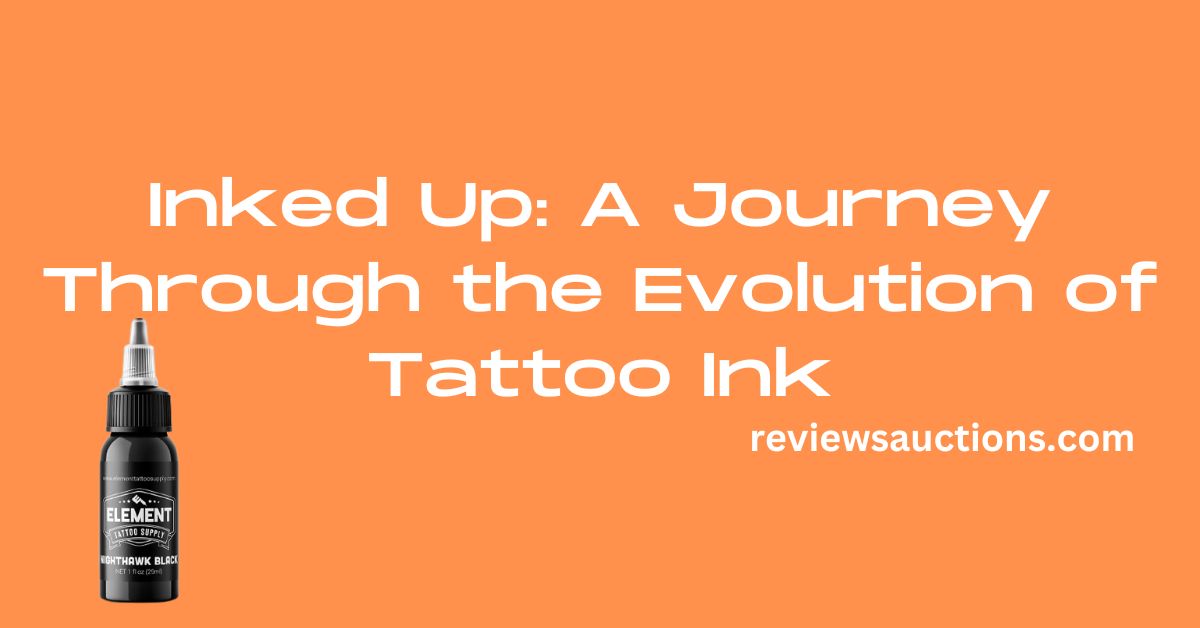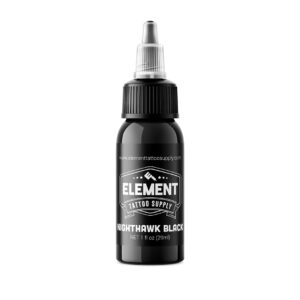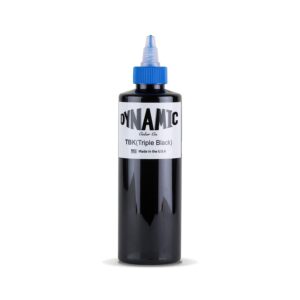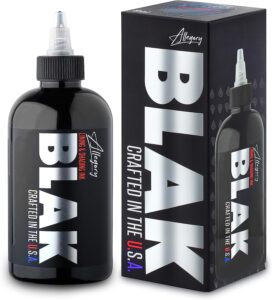Tattoos have always been an important part of expressing ourselves and showing off our individuality. Over the years, the industry has grown and evolved, and one of the biggest changes has been in the types of inks used.
In this post, we’ll explore the journey from traditional inks to the modern inks used today. We’ll start by discussing the history of tattoo inks and how they have changed throughout the years. We’ll also look at the different types of inks available today and how they affect the final look of your tattoo. Finally, we’ll look at some of the best ink brands to help you find the perfect inks for your next tattoo. With this information in hand, you can be sure that your tattoo will look as perfect as you envisioned.
Tattooing has a long and varied history that spans across many cultures, with its roots dating back centuries. During this time, the materials used to create tattoos have evolved drastically. In this blog post, we will explore the evolution of tattoo ink from the traditional to the modern, providing an introduction to the ingredients, colors, and types of tattoo inks available today.
The History of Tattoo Ink
Traditional Tattoo Ink
Traditional tattoos were created using natural materials like charcoal and mud which were rubbed into the skin using sharp tools like bones and stone knives. This method was extremely painful, dangerous, and often resulted in reduced visibility or difficulty during the removal process.
Early Tattoo Inks
As technology advanced, more sophisticated methods of tattooing were developed. In 1891, Thomas Burrows developed an electric needle that allowed for faster and more precise application of pigment to the skin. This resulted in an explosion of modern-style tattoos whose popularity spread worldwide by World War II.
By the 1950s, popular tattoo parlors had begun to use premade inks from manufacturers such as E-Z Tatouage Products and Magic Mender Corporation. These inks consisted primarily of India ink or lamp black and vegetable dyes suspended in rubbing alcohol or other solvents and were generally low quality.
Modern Tattoo Inks
In recent years, advancements in technology have allowed for the production of high-quality, professional-grade tattoo inks made from a variety of materials including iron oxide (rust), titanium dioxide (white powder) and heavy metals like mercury or lead. The stronger colors produce by these inks are easier to erase should you decide to change your tattoo in the future because they are particularly created for both safety and longevity.
The best tattoo ink are those made from pigments that are nontoxic, non-allergenic, and non-carcinogenic and come from a reliable manufacturer who follows all industry standards for safety and quality control. It is important to do your research when looking for quality products as there are many poor quality inks on the market that may cause serious health issues if not properly regulated.
The Ingredients of Tattoo Ink
Pigments
Tattoo ink is composed of a variety of pigments or colorants including iron oxide (rust), titanium dioxide (white powder), vegetable dyes, heavy metals such as mercury or lead, color additives approved by the FDA, and plant extracts such as henna or indigo dyes. The specific type of pigment used is key to creating vibrant colors that hold up over time without fading or smearing.
Carrier Methods
The pigments used to create tattoo ink are suspended in water-based or oil-based liquids called “carriers” which allow for even application to the skin. Water-based carriers are typically more durable than oil-based counterparts due to their ability to penetrate deeper into the skin’s layers which helps reduce fading over time. Some newer oil-based carriers contain ingredients like ethyl alcohol which helps prevent damage caused by our body’s natural oils over time.
The Different Colors of Tattoo Ink
Primary Pigments
It is possible to create a wide range of colors by blending different pigments in different proportions and intensities with a carrier solution, such as mixing yellow and red to make orange or blue and green to make turquoise. Carbon black, red iron oxide, yellow iron oxide/silver, cadmium green/copper, ultramarine/cobalt aluminates, brown manganese dioxide, and white titanium dioxide are among the most widely used colors.
Secondary Colors
Tertiary colors can also be achieved by mixing two primary colors together such as pink (red + white) or purple (blue + red). Additionally, certain pigments can be altered through processes such as heat treatment resulting in new hues such as shades of orange or teal or through bleaching techniques which create shades like greywash or silverwash which can be used for shading purposes in certain designs like portraits or landscapes.
The Different Types of Tattoo Inks
Solid Color Inks
Solid color tattoos utilize single color pigment particles suspended in a carrier solution allowing them to remain distinct from one another when applied to the skin creating vivid lines and sharper contrasts between individual elements within a design’s composition . Furthermore, they tend to last longer than non-solid inks due to their ability to penetrate deeper into the skin’s layers, reducing fading over time. This is in contrast to non-solid inks, which tend to bleed into one another, creating blurred lines and hazy edges over time due to fading from exposure to sunlight or other elements such as sweat or soap residue, breaking down intrinsic pigment particles held within the carrier solution.
Non-Solid Color Inks
These consist of multi-colored pigments that blend together when applied creating hazy gradient effects often seen in tribal designs , watercolor tattoos , etc . They don’t last long because they don’t go very deep into the skin, but there are ways to improve their durability during application, such as alternating between shades slowly to make each layer thicker than usual and increase depth.
Metallic Inks
Due to their one-of-a-kind chemical composition, these metallic particles suspended in a carrier solution reflect light and shimmer iridescently when applied. You’ll typically find them bordering other design components, such script text or feather accents, to heighten the illusion of depth.
The Safety Of Tattoo Ink
The History Of Ink Regulation
Since 1973, when it first began enforcing regulations on tattoo ink, the FDA has mandated that all domestic producers print batch information on the outside and inside of their packaging. In addition, at least once every two years, tattoo artists are required to submit samples from every batch they’ve use for testing, allowing the FDA to assess the lot’s safety before it hits the shelves.
The Current Regulations
As of right now, getting a tattoo done professionally can only be done with what’s called “Single Service Equipment,” which entails using sterile, disposable needles for each customer. A post-use autoclave cycle is require for all non-disposable instruments. Recent legislation has mandated the creation of biosafety plans outlining the safe storage and disposal of used needles and other medical waste. In addition, for the sake of keeping track of when things expire, it is now required that producers include such dates on product labels.
The Future Of Ink Regulation
On top off existing regulations set forth by both federal amp state governments it is expect that we will soon see an increase inn industry wide standards with regards too monitoring emissions , tracing ingredients used during production processes , amp instituting stricter guidelines focused on preventing cross contamination between batches. It is certainly an exciting time inn terms off innovation amp safety consciousness with regards too professional grade best tattoo ink for beginners development.
Conclusion:
The ink used for tattoos is a complex mixture of ingredients that have evolved over time to create the vivid and long-lasting tattoos we know today. From traditional inks created from natural materials to modern-day professional grade inks, the journey of tattoo ink has been fascinating. From the different pigments used to create colors to the various carrier methods that provide longevity, the types of ink available today are vast and ever-evolving. It’s important to do your research and choose a reliable manufacturer when buying tattoo inks, as poor-quality inks can cause serious health issues if not properly regulated. With the right ink and a skilled artist, you can be sure that your tattoo will turn out just the way you’d imagined.
Other Best Product Reviews
- Best Pencils for Drawing
- Best Football Helmet For 2023
- Best lineman Cleats
- The Best Conditioner for Poodles 2023
- Best Disc Golf Shoes in 2023
- The Best Horse Feed
- Best Basketball Shoes for Wide Feet
- Best Soccer Cleats
- Best Baseball Gloves of 2023
- Best Football Gloves
- The Best Digital Pianos
- Best Espresso Machines Under $200
- Best Stroller Fan
- The Best Colored Pencils
- The Best Toothpaste for Bad Breath
- The Best Clippers for Fades
- The 7 Best Adhesive Remover in 2023
- Best Polyurethane
- Best Dog Clippers
- Best Golf Balls
- Best Baseball Bats
- Best Caulk for Showers
- Best Caulk Gun
- Best Pickleball Paddles
- Best Versace Cologne
- Best Snowmobile Helmet
- Best Summer Colognes For Men
- Best Seiko Watches For Men
- Best Tattoo Ink
- Best Beard Balm
- Best Volleyball Knee Pads
- Vivaia Shoes
- Best Volleyball shoes
- Best Toothpaste for gums
- best football cleats for wide feet



